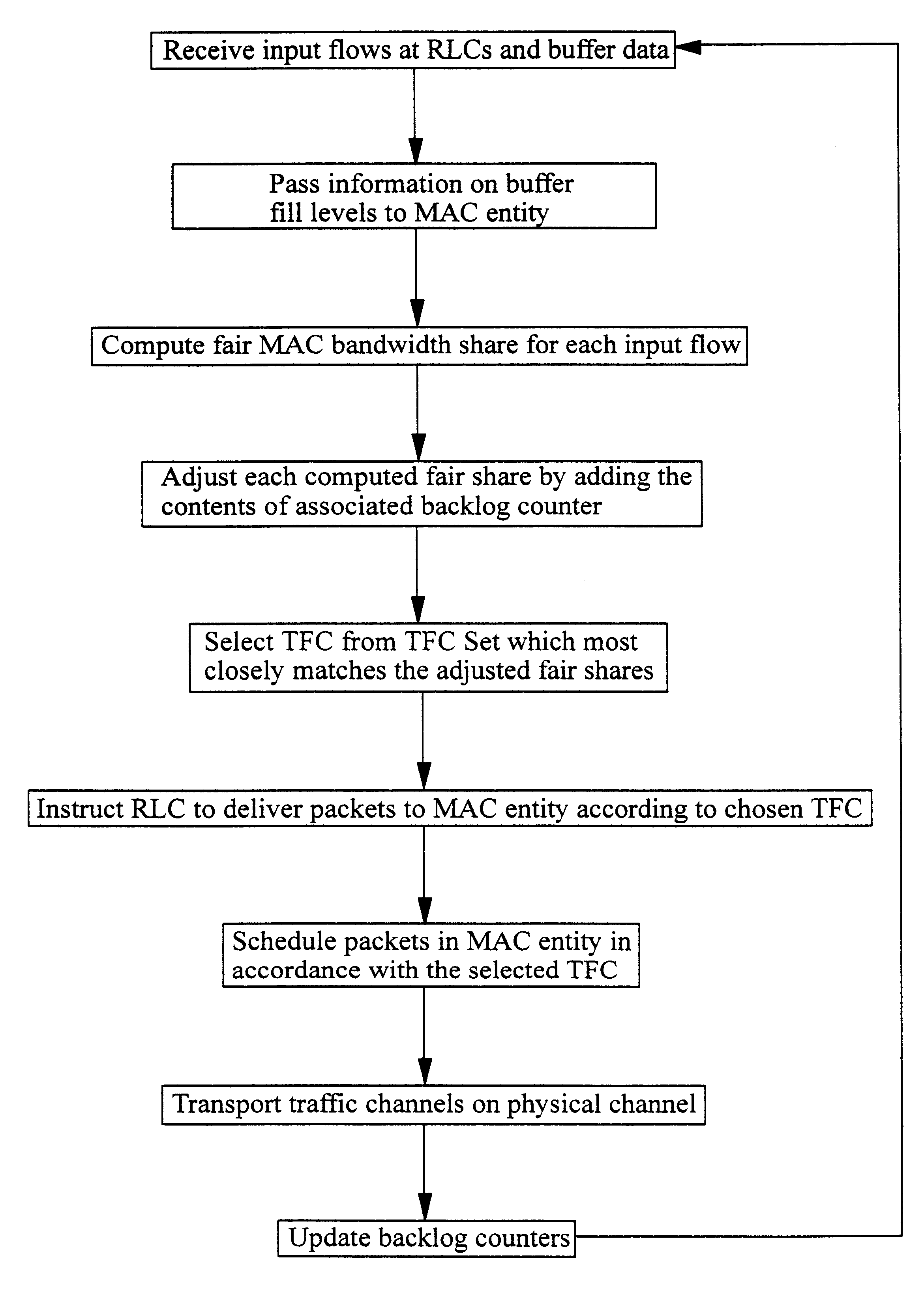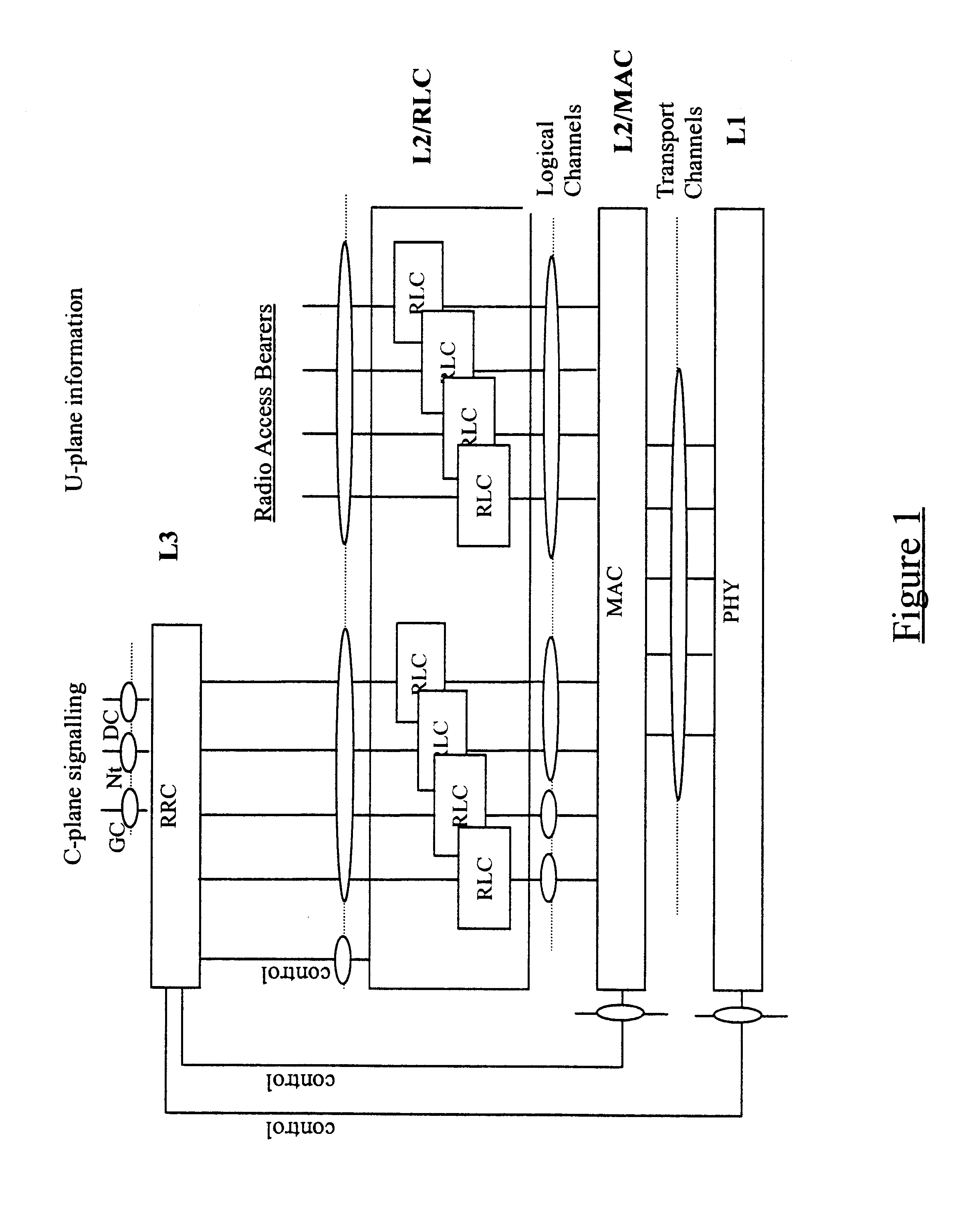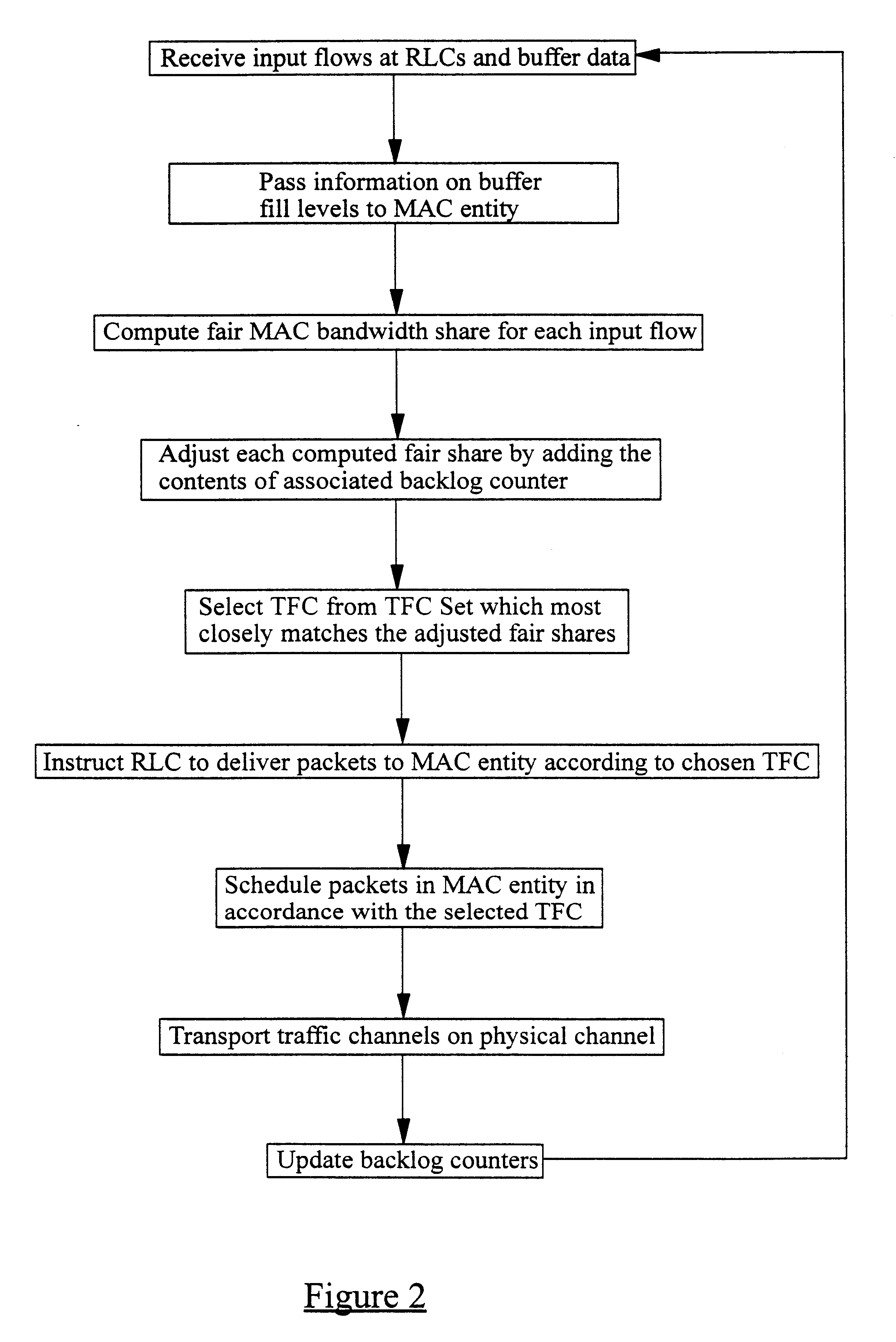Data transmission in a telecommunications network
a data transmission and telecommunications network technology, applied in data switching networks, wireless commuication services, multiplex communication, etc., can solve the problems of inability to send data, and the backlog of unsent data may build up for the input flow
- Summary
- Abstract
- Description
- Claims
- Application Information
AI Technical Summary
Benefits of technology
Problems solved by technology
Method used
Image
Examples
Embodiment Construction
As has already been described above, a simplified UMTS layer 2 consists of one Radio Resource Control (RRC) entity, a Medium Access Control (MAC) entity for each mobile station, and a Radio Link Control (RLC) entity for each Radio Access Bearer (RAB). The MAC entity performs scheduling of outgoing data packets, while the RLC entities provide buffers for respective input flows. The RRC entity sets a limit on the maximum amount of data that can be transmitted from each flow by assigning a set of allowed Transport Format Combinations (TFC) to each MAC (referred to as a TFC Set or TFCS), but each MAC must independently decide how much data is transmitted from each flow by choosing the best available Transport Format Combination (TFC) from the TFCS.
The proposed method works by calculating at the MAC entity, (on a per Transmission Time Interval basis) the optimal distribution of available bandwidth using the Generalised Processor Sharing GPS approach (see the article by A. K. Parekh et al...
PUM
 Login to View More
Login to View More Abstract
Description
Claims
Application Information
 Login to View More
Login to View More - R&D
- Intellectual Property
- Life Sciences
- Materials
- Tech Scout
- Unparalleled Data Quality
- Higher Quality Content
- 60% Fewer Hallucinations
Browse by: Latest US Patents, China's latest patents, Technical Efficacy Thesaurus, Application Domain, Technology Topic, Popular Technical Reports.
© 2025 PatSnap. All rights reserved.Legal|Privacy policy|Modern Slavery Act Transparency Statement|Sitemap|About US| Contact US: help@patsnap.com



